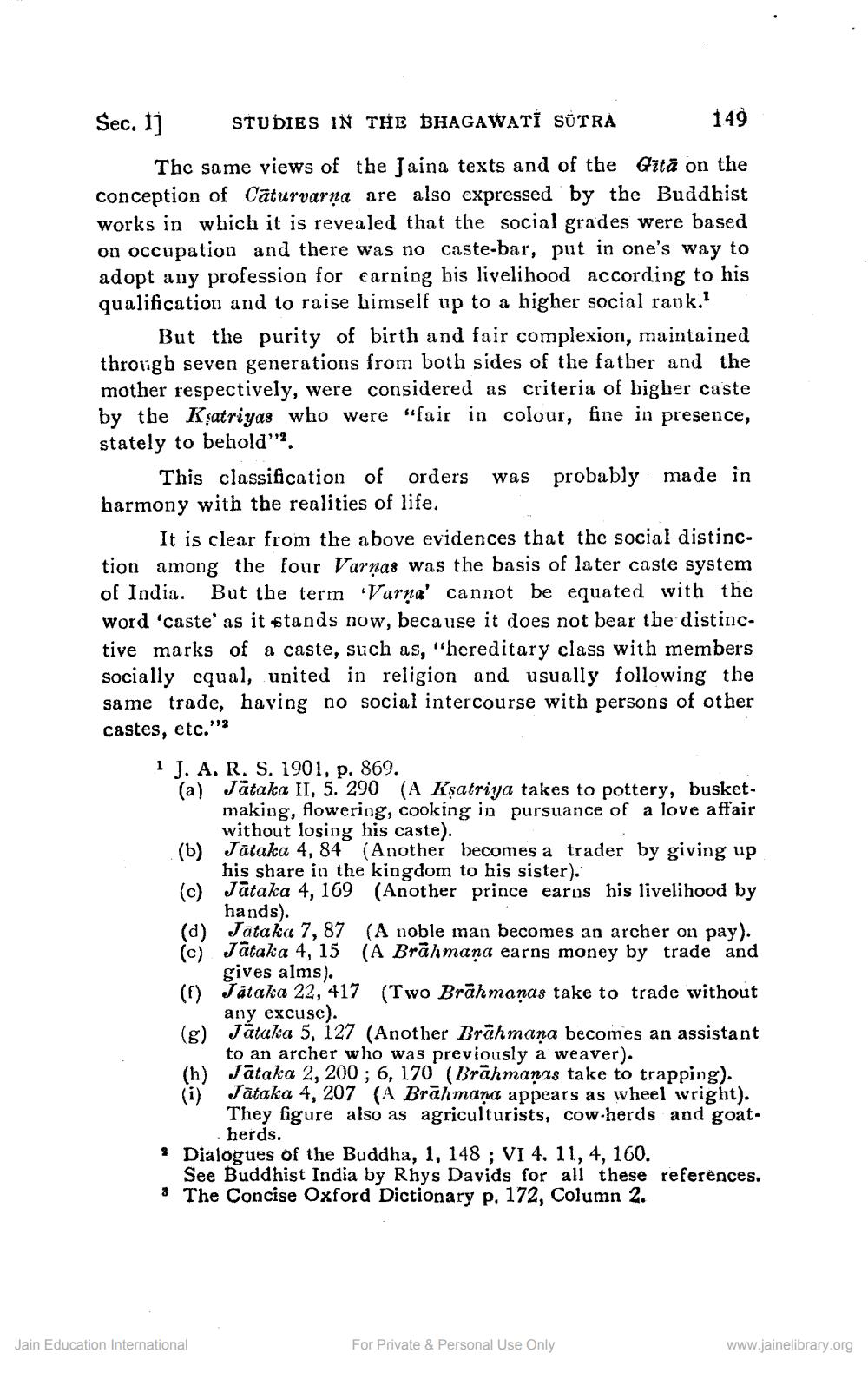________________
STUDIES IN THE BHAGAWATI SUTRA
149
The same views of the Jaina texts and of the Gitä on the conception of Caturvarņa are also expressed by the Buddhist works in which it is revealed that the social grades were based on occupation and there was no caste-bar, put in one's way to adopt any profession for earning his livelihood according to his qualification and to raise himself up to a higher social rank.'
But the purity of birth and fair complexion, maintained througb seven generations from both sides of the father and the mother respectively, were considered as criteria of higher caste by the Ksatriyas who were "fair in colour, fine in presence, stately to behold".
This classification of orders was probably made in harmony with the realities of life.
It is clear from the above evidences that the social distinction among the four Varnas was the basis of later caste system of India. But the term Varna' cannot be equated with the word 'caste' as it stands now, because it does not bear the distinctive marks of a caste, such as, hereditary class with members socially equal, united in religion and usually following the same trade, having no social intercourse with persons of other castes, etc."
1 J. A. R. S, 1901, p. 869. (a) Jataka II, 5. 290 (A Ksatriya takes to pottery, busket
making, flowering, cooking in pursuance of a love affair
without losing his caste). (b) Jataka 4, 84 (Another becomes a trader by giving up
his share in the kingdom to his sister), Jataka 4, 169 (Another prince earos his livelihood by hands). Jātaka 7,87 (A noble man becomes an archer on pay). Jātaka 4, 15 (A Brāhmana earns money by trade and gives alms). Jataka 22, 417 (Two Brahmanas take to trade without any excuse). Jataka 5, 127 (Another Brahmana becomes an assistant
to an archer who was previously a weaver). (h) Jātaka 2, 200; 6, 170 (Brāhmanas take to trapping).
Jātaka 4, 207 (A Brāhmana appears as wheel wright). They figure also as agriculturists, cow-herds and goat.
herds. • Dialogues of the Buddha, 1, 148 ; VI 4. 11, 4, 160.
See Buddhist India by Rhys Davids for all these references. 3 The Concise Oxford Dictionary p. 172, Column 2.
එ ම මම ම ෂි ජිම
Jain Education International
For Private & Personal Use Only
www.jainelibrary.org




